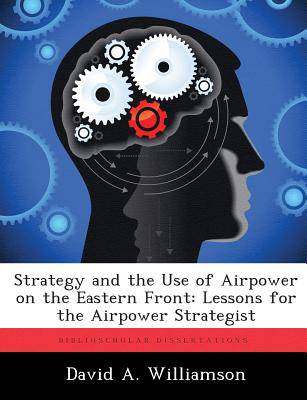
- Afhalen na 1 uur in een winkel met voorraad
- Gratis thuislevering in België vanaf € 30
- Ruim aanbod met 7 miljoen producten
- Afhalen na 1 uur in een winkel met voorraad
- Gratis thuislevering in België vanaf € 30
- Ruim aanbod met 7 miljoen producten
Zoeken
Strategy and the Use of Airpower on the Eastern Front
Lessons for the Airpower Strategist
David A Williamson
Paperback | Engels
€ 54,45
+ 108 punten
Omschrijving
The Eastern Front is likely the least appreciated and least understood component of the Second World War. This is especially unfortunate since it contains some of the richest lessons about strategy and the application of airpower while faced with an imminent and existential threat. This study investigates several of these lessons and concludes that, despite the significant impact allied efforts had on the Western Front, their efforts were ultimately of secondary importance compared to the costly and more grueling efforts of the Soviet Union in defeating Germany. Furthermore, despite the fact that Soviet airpower diverged from patterns preferred by US strategic airpower thinkers, the Soviet air force (VVS) developed into an enormously successful and competent air arm which warrants further study, investigation, and consideration. The VVS utilized airpower very differently than did the United States, and yet its ability to reestablish air superiority and decisively contribute to national victory was truly impressive. While allied strategic bombing efforts increased friction, reduced German freedom of action, and reduced available German resources, it was ultimately unable to produce the decisive results they had hoped. Instead, the fortuitous combination of the Red Army, VVS direct and indirect support and deep interdiction operations, time, distance, and the unforgiving Soviet winter produced the most tangible strategic effect: the destruction of 6.5 million German soldiers on the Eastern Front.
Specificaties
Betrokkenen
- Auteur(s):
- Uitgeverij:
Inhoud
- Aantal bladzijden:
- 128
- Taal:
- Engels
Eigenschappen
- Productcode (EAN):
- 9781288300587
- Verschijningsdatum:
- 15/11/2012
- Uitvoering:
- Paperback
- Formaat:
- Trade paperback (VS)
- Afmetingen:
- 189 mm x 246 mm
- Gewicht:
- 240 g

Alleen bij Standaard Boekhandel
+ 108 punten op je klantenkaart van Standaard Boekhandel
Beoordelingen
We publiceren alleen reviews die voldoen aan de voorwaarden voor reviews. Bekijk onze voorwaarden voor reviews.











